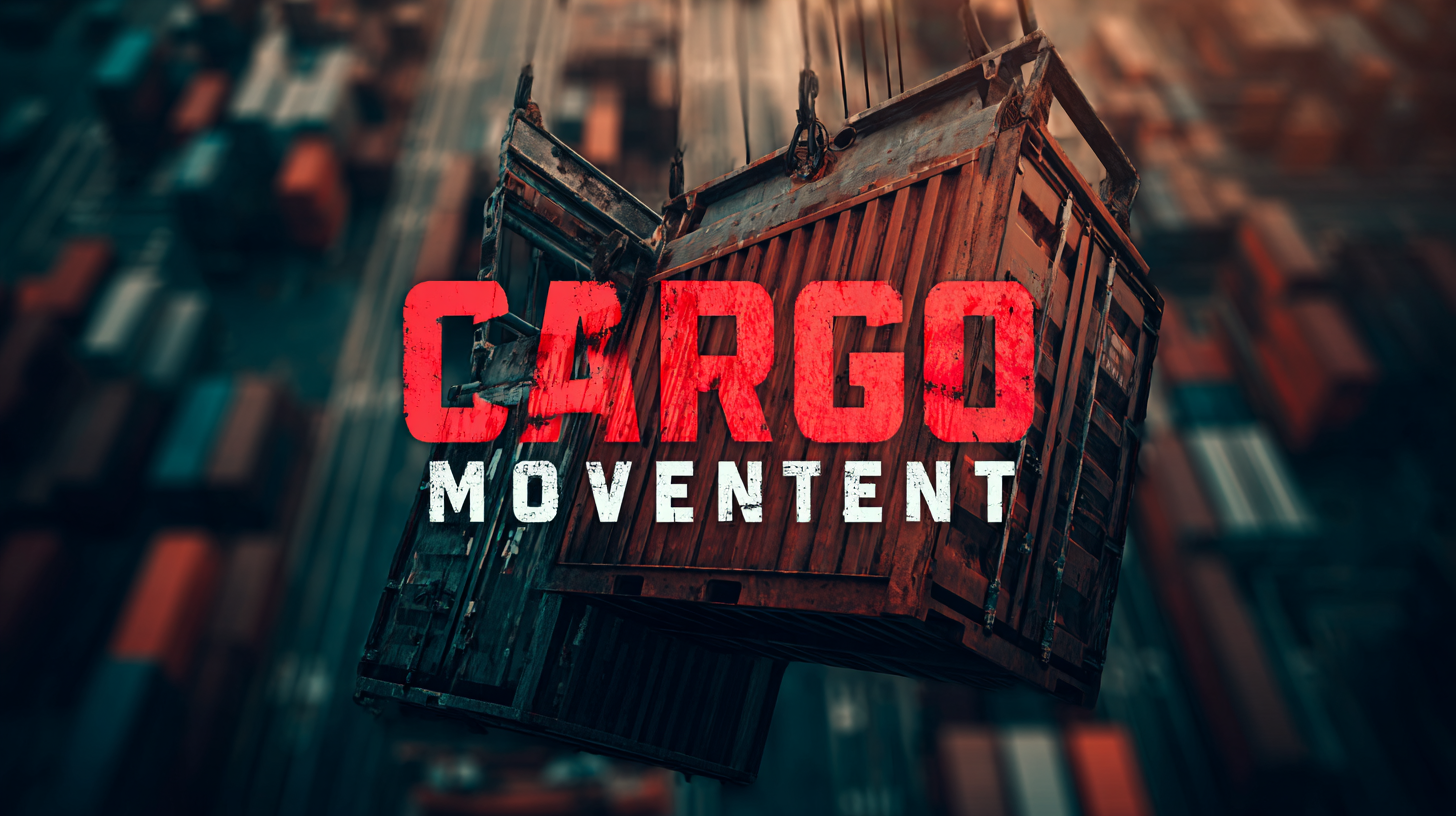In the dynamic world of logistics, maximizing cargo movement is paramount for businesses aiming to thrive in today's competitive environment. Effective after-sales support and maintenance strategies play a crucial role in ensuring that cargo systems operate at their peak potential. This blog will delve into industry application cases that illustrate the challenges faced during cargo movement, particularly focusing on the common problems and how they can be addressed through robust support systems. By exploring practical solutions and best practices, we aim to provide insights that can enhance efficiency, reduce downtime, and ultimately lead to improved customer satisfaction.

Join us as we discover the critical link between strategic support mechanisms and the seamless transfer of goods in the supply chain.
In the cargo movement industry, enhancing after-sales support is crucial for maximizing efficiency and maintaining customer satisfaction. Companies can implement proactive communication strategies, ensuring that clients receive timely updates regarding their shipments. This includes providing tracking information and addressing any potential delays caused by external factors such as port congestion or air freight disruptions, particularly in the wake of challenges posed by recent global events.
Furthermore, the integration of technology plays a vital role in optimizing maintenance strategies for equipment used in cargo transport. Utilizing data analytics can help identify patterns in equipment performance, allowing companies to anticipate maintenance needs before they lead to costly breakdowns. This not only enhances operational efficiency but also builds trust with customers, who rely on timely deliveries. By committing to effective after-sales support and robust maintenance strategies, businesses can navigate the complexities of cargo movement while ensuring a reliable service that meets the demands of a dynamic market.
| Strategy | Description | Expected Outcome | Implementation Timeline | Key Performance Indicator |
|---|---|---|---|---|
| Regular Training Programs | Conduct regular training sessions for staff on cargo handling procedures. | Improved cargo handling efficiency and reduction in damage rates. | Quarterly | Reduction in incidents by 15% |
| Enhanced Customer Feedback Loop | Implement regular surveys and feedback mechanisms for customers. | Increased customer satisfaction and improved service adjustments. | Monthly | Customer satisfaction score above 85% |
| Proactive Maintenance Schedules | Establish regular maintenance checks for cargo transportation equipment. | Reduced downtime and increased equipment lifespan. | Bi-Annually | Equipment downtime reduced by 20% |
| 24/7 Customer Support | Provide round-the-clock support for clients to address issues promptly. | Quicker resolution times and enhanced client relationships. | Ongoing | Response time under 1 hour for urgent issues |
| Data Analytics Utilization | Analyze cargo movement data to optimize routes and processes. | Increased efficiency and reduced operational costs. | Quarterly | Cost savings of 10% on operations |
The importance of maintenance in enhancing cargo efficiency and reliability is projected to be more significant than ever by 2025. According to a report by the International Telecommunication Union (ITU), effective maintenance strategies can reduce cargo downtime by an impressive 30%. This reduction is crucial, as it directly correlates with operational efficiency and overall productivity. Cargo operations, which now heavily rely on advanced technologies, require regular upkeep not only to maintain their functions but also to optimize performance. The integration of predictive maintenance tools, using IoT and AI, is expected to lower operational costs by an estimated 25%, creating a more sustainable logistic framework.
Furthermore, the State of Logistics Report suggests that businesses focusing on after-sales support and proactive maintenance are likely to see a 15% increase in reliability ratings from their clients. This reliability boost enhances customer satisfaction, promoting long-term partnerships and repeat business. As industries evolve and adapt to the challenges posed by global supply chains, prioritizing maintenance will not only maximize cargo movement but is also essential for maintaining a competitive advantage in the market. In 2025, the companies that invest in comprehensive after-sales support systems will likely lead the way in efficiency and customer trust, proving that maintenance is not just an operational necessity but a strategic advantage.
In today's competitive logistics landscape, leveraging technology for improved after-sales services is not just an advantage—it is a necessity. The integration of Internet of Things (IoT) devices and cloud-based solutions allows for a more seamless connection across supply chains, enhancing visibility and operational efficiency. This technology-driven approach enables companies to respond swiftly to customer needs, substantially improving the after-sales customer experience.
Tips for integrating technology into after-sales support:
1. Invest in automation tools that streamline logistics activities and warehouse operations. This can significantly reduce handling times and improve service delivery.
2. Utilize data analytics to gain insights into customer preferences and inventory management. Understanding trends can help align stock levels with demand, minimizing delays in fulfilling after-sales requests.
3. Foster partnerships with tech providers to remain at the forefront of industry innovations. Collaborating with experts can aid in adopting cutting-edge solutions tailored to specific logistical challenges.
By embracing these strategies, companies can not only enhance their after-sales service but also increase customer satisfaction and loyalty in an ever-changing market.

Proactive maintenance approaches play a crucial role in maximizing cargo transit performance, particularly in an era where supply chain efficiency is paramount. According to a report by the International Logistics and Supply Chain Conference (ILSCC), organizations that implement proactive maintenance strategies can reduce cargo transit delays by up to 30%. This reduction is largely attributed to the predictive analytics used to identify potential equipment failures before they occur, thereby minimizing disruptions in the supply chain.
Furthermore, investments in advanced technologies—such as IoT sensors and machine learning algorithms—enable real-time monitoring of cargo handling equipment. A study by the Global Council of Supply Chain Management Professionals (GCSCPM) revealed that companies utilizing these technologies experience a decrease in maintenance costs by approximately 25%, while enhancing overall operational efficiency. By adopting a proactive stance, businesses not only safeguard their cargo movement but also significantly reduce the risk of unexpected downtime, which can lead to costly delays and dissatisfied customers.
 In 2025, the ability to engage customers effectively will be at the forefront of after-sales support strategies. As businesses navigate increasingly complex supply chains, fostering a strong relationship with customers post-purchase becomes essential. This engagement not only builds loyalty but also enhances the customer experience, making it a key component in maintaining cargo movement efficiency.
By leveraging digital tools and customer feedback loops, organizations can personalize their service approaches, anticipating issues and addressing concerns before they escalate.
In 2025, the ability to engage customers effectively will be at the forefront of after-sales support strategies. As businesses navigate increasingly complex supply chains, fostering a strong relationship with customers post-purchase becomes essential. This engagement not only builds loyalty but also enhances the customer experience, making it a key component in maintaining cargo movement efficiency.
By leveraging digital tools and customer feedback loops, organizations can personalize their service approaches, anticipating issues and addressing concerns before they escalate.
Furthermore, the integration of predictive analytics into after-sales support will play a crucial role in sustaining customer engagement. Companies can utilize data to identify trends, enabling them to offer proactive maintenance and support services tailored to individual client needs. This strategy not only optimizes operational performance but also demonstrates a commitment to customer care, reinforcing trust and satisfaction.
As we move forward, creating a culture centered around customer engagement will be pivotal in distinguishing companies in a competitive marketplace, thereby maximizing both cargo movement effectiveness and overall business success.






